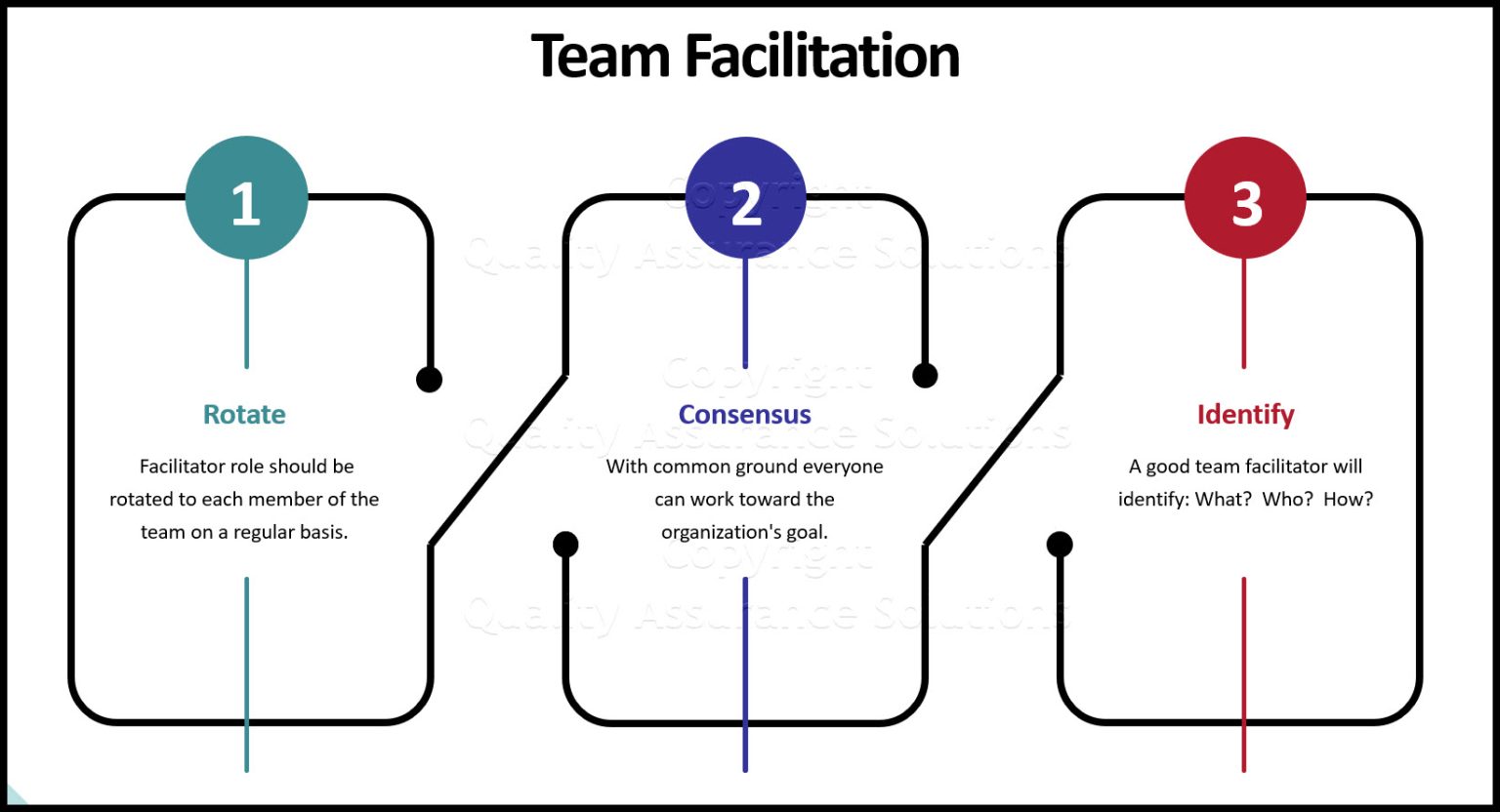When most people think about facilitation, they imagine someone running a meeting, guiding the agenda, and making sure the discussion ends on time. While that image isn’t wrong, it’s incomplete. Facilitation is far more than just “keeping meetings on track.”
A skilled facilitator is a catalyst for collaboration, a guide for group dynamics, and a safeguard for productivity and inclusivity. In fact, the role of a facilitator extends well beyond the meeting room they are instrumental in shaping how teams think, communicate, and work together day after day.
In today’s fast-paced, hyper-collaborative world, every team needs a skilled facilitator. Not just during workshops, brainstorming sessions, or strategy discussions, but in the everyday rhythms of teamwork. Let’s dive into why facilitation is so essential, what it looks like beyond meetings, and how teams can embed it into their culture.
What Is Facilitation, Really?
At its core, facilitation is about making it easier for groups to work together effectively. The word itself comes from the Latin facilis, meaning “easy” or “to make easier.”
A facilitator doesn’t do the work for the team, nor do they dictate decisions. Instead, they design processes, hold space for dialogue, and guide groups toward outcomes they might not reach alone. They make collaboration easier, smoother, and more impactful.
The best facilitators:
- Create clarity around goals and expectations.
- Help teams surface diverse perspectives.
- Guide conversations without dominating them.
- Manage group energy and focus.
- Turn conflict into constructive dialogue.
- Foster accountability and follow-through.
In other words, facilitation is less about control and more about guidance.
Why Teams Need Facilitation Beyond Meetings
While structured meetings are an obvious place for facilitation, the skill set becomes even more valuable in day-to-day team dynamics. Here’s why:
1. Better Decision-Making
Teams often fall prey to groupthink, rushing into consensus without exploring alternatives. A facilitator slows down the process just enough to ensure different voices are heard and decisions are tested from multiple angles.
This leads to outcomes that are more robust, sustainable, and aligned with team goals not just quick fixes.
2. Improved Communication
Even strong teams struggle with misunderstandings. Without facilitation, conversations can spiral into confusion or unproductive debates. A facilitator steps in to reframe questions, check for shared understanding, and bring clarity where ambiguity reigns.
3. Greater Inclusion and Equity
In every group, some voices dominate while others remain silent. Skilled facilitators create balance by encouraging quieter members to share and ensuring dominant voices don’t overpower. This isn’t just about fairness—it directly improves results, because diverse input leads to stronger ideas.
4. Healthy Conflict Navigation
Conflict is inevitable in teams. Left unmanaged, it creates tension and mistrust. Avoided altogether, it stifles innovation. Facilitators help teams engage with conflict constructively—acknowledging emotions, surfacing disagreements, and turning friction into fuel for growth.
5. Stronger Relationships and Trust
At the heart of facilitation is building safe, respectful spaces for dialogue. Over time, this strengthens trust among team members. When people feel heard and respected, collaboration becomes more natural and productive.
6. Adaptability in Times of Change
Organizations face constant change new strategies, shifting markets, evolving technologies. Change creates uncertainty and resistance. A facilitator helps teams navigate transitions by creating room for reflection, addressing concerns, and aligning people behind new directions.
Everyday Facilitation: What It Looks Like
Facilitation isn’t just for off-sites or big workshops. It shows up in the everyday work of teams:
- One-on-one check-ins → A facilitator-like manager asks open questions, listens deeply, and helps employees clarify their own thinking instead of jumping straight to advice.
- Project kick-offs → Rather than diving into tasks, a skilled facilitator ensures the team has clarity on purpose, roles, and expectations from the start.
- Brainstorming sessions → Instead of letting a few loud voices dominate, the facilitator introduces structured methods (silent idea generation, sticky notes, digital tools) to level the playing field.
- Daily stand-ups or team huddles → Facilitation ensures updates don’t turn into long monologues and that everyone leaves with clarity on next steps.
- Difficult conversations → A facilitator helps teams surface tensions in a respectful way, moving from blame to shared problem-solving.
These micro-moments of facilitation may not feel dramatic, but collectively, they define the culture and productivity of a team.
Facilitation as a Leadership Superpower
Facilitation isn’t just for consultants or external moderators it’s a core leadership skill. The best leaders don’t see themselves as the smartest voice in the room. Instead, they see themselves as guides who unlock the intelligence of the group.
Here’s why leaders who act as facilitators are more effective:
- They empower rather than dictate, building ownership across the team.
- They listen first, speak second, creating psychological safety.
- They design processes that help teams self-organize.
- They adapt on the fly, reading group dynamics and shifting approaches.
Facilitative leaders create environments where people want to contribute and where collaboration thrives even in their absence.
How Teams Can Build Facilitation into Their DNA
Not every team will have a professional facilitator. But every team can embed facilitation practices into their culture. Here are some steps to start:
1. Develop Facilitation Skills Across Roles
Offer training in facilitation basics: active listening, asking powerful questions, structuring conversations, and managing group dynamics. Encourage everyone, not just managers, to practice.
2. Rotate Facilitation Responsibilities
In regular meetings, try rotating the role of facilitator. This builds skill across the team and prevents leadership from being overly centralized.
3. Use Structured Collaboration Tools
Adopt tools that promote equal participation like digital whiteboards, idea ranking, or anonymous input methods. These replicate the principles of facilitation and reduce bias.
4. Normalize Reflection and Feedback
Facilitators often close sessions with reflection. Teams can do the same: regularly pause to ask, what worked well in our collaboration? What could we improve?
5. Celebrate Inclusive Behaviors
Recognize and reward when team members create space for others, navigate conflict respectfully, or clarify group goals. Culture shifts when positive behaviors are reinforced.
Common Myths About Facilitation
Before closing, let’s clear up some common misconceptions:
- “Facilitation is just running meetings.”
Wrong. Facilitation is a mindset and skillset for guiding collaboration in any context.
- “The facilitator is the boss.”
Not true. A facilitator doesn’t control decisions they guide the process so the group can decide.
- “Facilitation slows things down.”
At first, yes. But slowing down to listen and clarify upfront saves enormous time by preventing rework, conflict, and confusion later.
- “Facilitation is only needed in big groups.”
Even two people can benefit from facilitated dialogue, especially in conflict or decision-making situations.
The Future of Work Demands Facilitation
Work today is more complex, interconnected, and fast-moving than ever. Teams must collaborate across cultures, time zones, and disciplines. In this environment, technical expertise alone isn’t enough.
What separates thriving teams from struggling ones is how well they collaborate. And at the center of effective collaboration is facilitation.
As organizations embrace hybrid work, navigate rapid change, and tackle global challenges, facilitation isn’t a “nice-to-have.” It’s a must-have competency for every team.
Final Thoughts
A skilled facilitator does more than guide meetings they shape how people think, listen, and solve problems together. They create space for inclusion, clarity, and alignment. They help teams turn conflict into creativity and uncertainty into progress.
Every team needs a facilitator. Not just for the big, structured moments, but for the everyday flow of work. And when facilitation becomes a shared skill woven into the DNA of the team collaboration shifts from being a challenge to becoming a true competitive advantage.
At Xpedio, we believe facilitation is the key to unlocking collective intelligence. Our mission is to help organizations go beyond meetings and embed facilitation into their culture empowering teams to collaborate more effectively, make better decisions, and drive sustainable impact. Whether through training, guided workshops, or building facilitation skills within leaders, we partner with teams to ensure facilitation isn’t just a role, but a mindset that transforms the way they work together.









